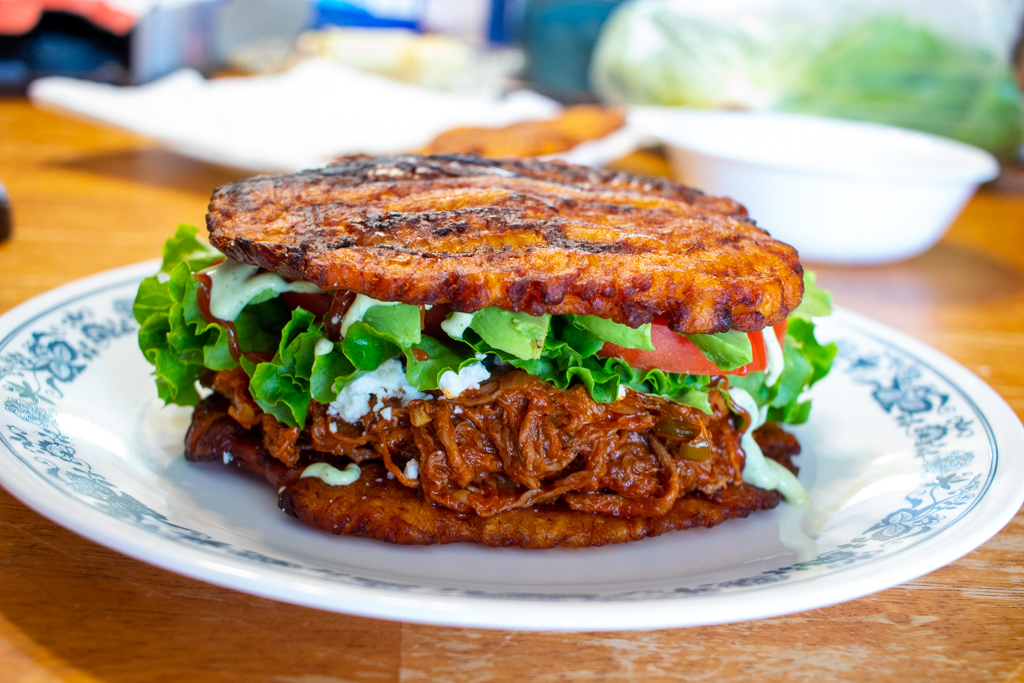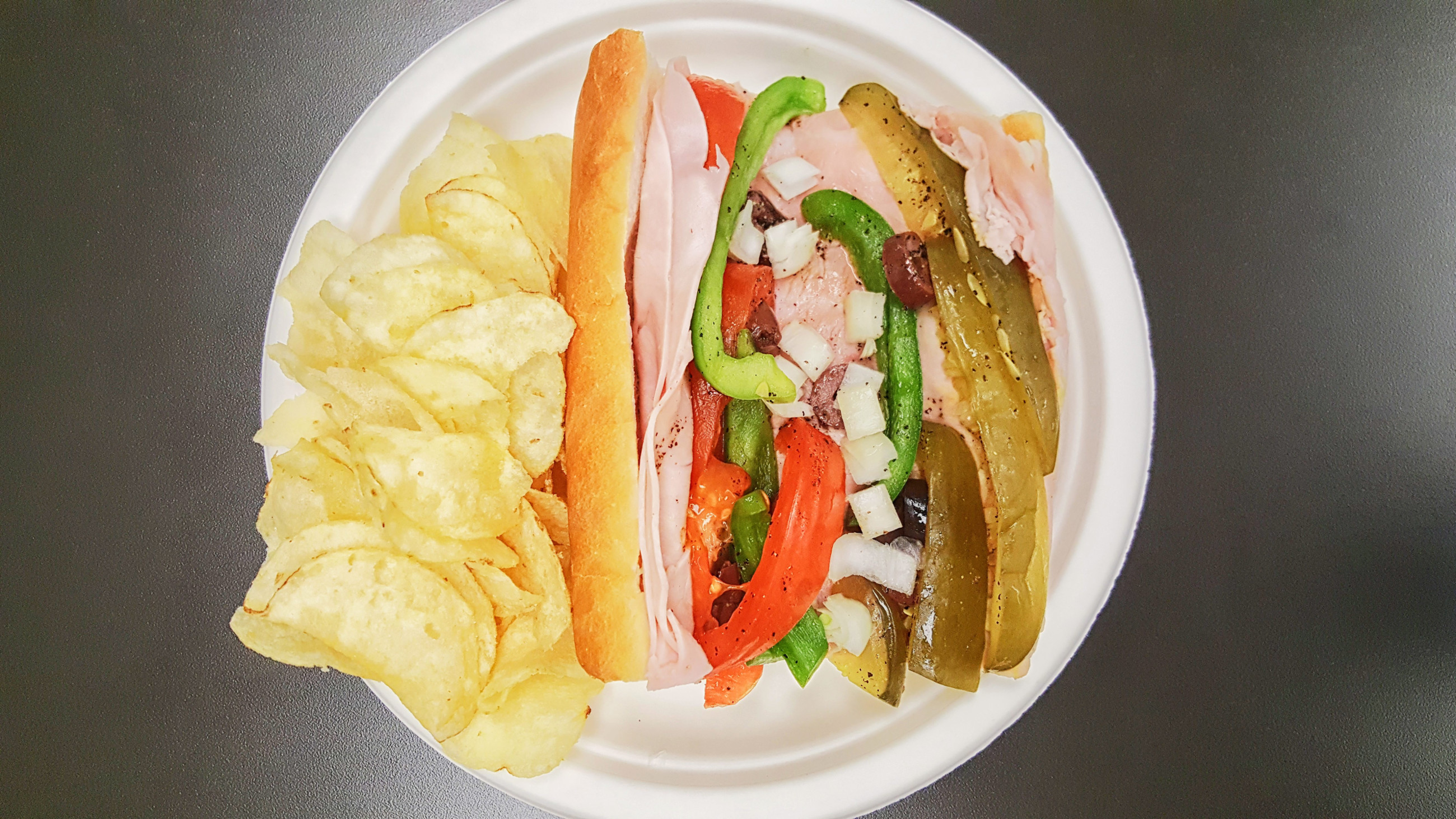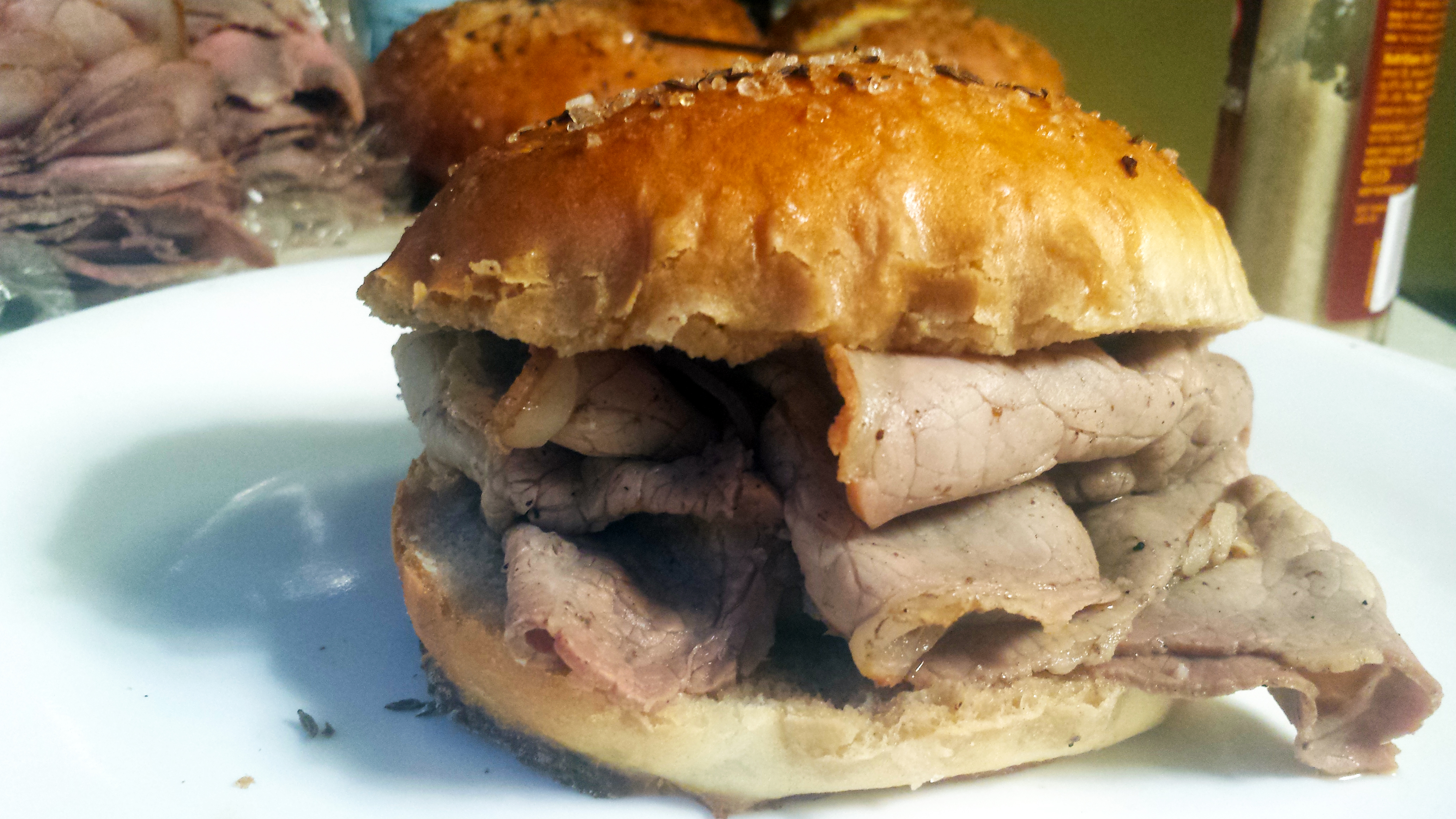Patacones Venezolanos
Latin America is a wonderland of sandwiches. We’ve made similar observations before: when extolling the virtues of Chilean sandwiches; when raving about the deliciousness of Choripán and Morcipán; when evangelizing the perfection that is the Peruvian sandwich condiment salsa criolla; when recording in painstaking detail the mouthwateringly varied sandwiches of Mexico (including those yet to come); not to mention the many other delightful and surprising sandwiches from Latin America and the Caribbean that we have covered in the past. They may feature a variety of meats, cheeses, or beans; they may include a seemingly endless number of sauces, salads, spreads, and pickled vegetables; they may come in sliced bread or rolls, flatbreads or stuffed cornmeal pancakes; the potential shapes and sizes are without limit. Latin sandwiches are varied and vibrant, an expression of joy enfolded in bread.
Sometimes though they don’t use bread at all. Like the Chicago-based Puerto Rican jibarito we explored previously, the Venezuelan Patacón uses smashed, fried plantains as the building blocks of a sandwich. Variously called Patacones Maracucho (that is, patacones from Maracaibo, Venezuela’s second largest city) or Patacones Zulianos (meaning from Zulia, the Venezuelan state containing Maracaibo), or more generally Patacones Venezolano, the word Patacón is shorthand that refers both to a single tostón–as these flattened fried plantains are called elsewhere–and to the sandwich it is used to make.
Lunch With Friends
Earlier this month I had the opportunity to meet up for lunch with an old friend. Matt is a scientist who came into town just to sing it out with one of his long-time favorite bands. He, his wife Elaine, and their daughter Addy were kind enough to let me inflict some of my sandwich research on them by joining me and my son Ian at a local Venezuelan restaurant, Rica Arepa.

Though the restaurant was nearly empty when Ian and I walked in shortly after 1:00pm on a Saturday, Rica Arepa’s 8 or 10 tables filled up quickly in the few minutes we waited for Matt’s family and was bustling by 1:15.
Rica Arepa’s menu leans heavily into the eponymous arepas, thick pancakes of corn masa that are sliced open and filled with a variety of ingredients. It also features a few iconic Venezuelan entrees though such as this Pabellón criollo that Ian ordered, a plate combining carne mechada–a savory shredded beef similar in flavor to Cuban ropa vieja–with black beans, rice, a fried egg, sweet fried plantains, and a mild, somewhat crumbly white cheese similar to queso fresco.

This same combination–minus the rice and fried egg–is available sandwiched in arepa form as enjoyed by Addy.

Pabellon arepa at Rica Arepa
Matt chose an arepa stuffed with punta trasera–a portion of the beef sirloin not often available as a separate cut in the US, also known in Brazil as picanha–with queso de mano, a soft white cheese made from a combination of cow’s and sheep’s milk with a texture similar to that of fresh mozzarella, and guasacaca, a Venezuelan avocado salsa similar to a thin guacamole.

Matt’s wife Elaine and I however both opted for the Patacón–the menu offers beef, chicken, pork, or mixto combining both beef and chicken. A brief discussion with our waitress revealed that the beef version would be most like what someone might order in Maracaibo, and that is what we both ordered.

The plantains–fried to a light, crisp, golden brown–were stuffed with lettuce, a thin slice of fried ham, a generous layer of ultrasavory carne mechada, a well-fried egg on top, and dressed with a combination of ketchup, mustard, and a cilantro/garlic mayonnaise common to both Venezuelan and Colombian cuisine.

The lettuce and ham are thin layers and their contributions–a slight vegetal bitterness, a little boost of salt–are negligible. The egg provides some additional savory character. The main players here though are the beef–again, ropa vieja is the most apt comparison, but essentially a shredded beef in a reduced sauce of tomato and beef stock, flavored with onion, green pepper, cumin, oregano–those sauces, and the plantains themselves.
It’s not an easy sandwich to eat. The plantains are rigid and nonabsorbent, neither containing their ingredients efficiently nor soaking up their juices and condiments, making it a sloppy proposition to pick this up and take a bite by hand. They are also, however, quite crisp and well-fried, making them less than easy to cut through with a knife. It’s a worthwhile battle though. While the most remarkable aspect of that afternoon was the company rather than the food, Rica Arepa is well worth a visit and will no longer just be “that place I drive by on my way to Hermosa.”
Home For The Holidays
Of course November means Thanksgiving, and Thanksgiving means visiting family, and the juxtaposition of patacones and a visit back home means a rare opportunity to prepare a sandwich for my mom that is naturally gluten-free. I joke around about my mom a lot but she is honestly a big part of the reason I’m at all competent in the kitchen, she reads every one of these articles (sending me screenshots of every typo she finds) and has always been one of my biggest supporters. She has been on a strictly gluten-free diet for a number of years now and can usually only live vicariously through my descriptions of these sandwiches.
Well, not today, ma!
Patacones are made from green plantains–these were green when I bought them but may have ripened a bit between that Jewel in Chicagoland and my mom’s house several days and 300 miles later. Plantains look a lot like bananas–bigger, thicker-skinned, but basically quite similar. Sweet, ripe, cooked plantains even taste a bit like bananas.

This is because essentially, botanically, plantains are bananas. Banana cultivars are divided into dessert bananas and cooking bananas, and the produce sold as plantains often consists of the latter category. There is a separate species known as “true plantains” but there is often little distinction made between them and the starchy varieties of banana.
Culinarily, though, you must remember this: that despite what the botanists say, plantains are not bananas. The skins are quite thick and require a sharp knife to remove–cut off both ends, cut slits down the length of the plantain on either side, and carefully peel away. The flesh is tougher too, starchy rather than sweet, and not particularly edible while raw.

To transform these raw plantains into patacones, we peel them and slice them into two short halves. Those halves are then fried for a minute or two in 350°F oil, just long enough to cook them, soften them, give them a little color.

I’ve made tostones before, using the common DIY method for flattening them–that is, using the bottom of a wide mug or a small plate. My results have been mixed. Tostones are smaller sections of the plantain, and are smashed along the long axis, causing some pieces to come loose. These patacones, on the other hand, are smashed on their sides, allowing them to better remain in one piece. Moreover, I have learned the secret of perfect patacones every time–use a tortilla press. Wrap the press in plastic, and separate the plantain pieces using plastic wrap or parchment paper to keep them from sticking together, and making these is the work of a few seconds.



After they’ve been pressed, the plantains are fried a second time in oil that is closer to 375°F, for a bit longer than the first fry–we want them nice and crisp, after all.

For the sandwich’s main filling, I once again chose beef in the form of this carne mechada recipe. If anything it is even more outrageously savory than what we enjoyed at Rica Arepa–flank steak braised in a sauce containing 2 full quarts of beef broth as well as tomato sauce, tomato paste, onion, green pepper, cumin, oregano, Worcestershire sauce, and bay leaf, reduced until all that flavor is concentrated into a thick coating on a lattice of meat strands.

To assemble our sandwiches, we begin with a single Patacón

Atop this a few good scoops of the beef. Only you know how much beef your sandwich needs–as my friends often say of garlic, you measure that with your heart.

Fillings vary–some versions of the sandwich, like we had at Rica Arepa, might use ham and a fried egg. Some might use a type of slaw similar to Salvadoran curtido, or shredded lettuce, or pickled onions. I was unable to source any legitimate Venezuelan cheese for this endeavor but the mild cheese served with Ian’s Pabellón criollo reminded me of Mexican queso fresco, so I crumbled some of that onto the beef.

Similar to Rica Arepa, I used a single leaf of green leaf lettuce, doubled over in half

Here I departed from the Rica Arepa version again, using tomato and avocado instead of the ham and fried egg.

Sauces can also vary–a pink sauce similar to salsa golf would not be uncommon. Neither would a guasacaca like Matt had in his arepa. I finished with the same three sauces that Rica Arepa used though–ketchup, simple yellow mustard, and a South American garlic/cilantro sauce with a hundred slight variations all over the internet. Here is the recipe I made and it was terrific.

Applied directly to the meat as in the Rica Arepa version of this sandwich, the sauces blend nicely into the rich tomato reduction glazing the meat. I do like to think of condiments like this–especially that mayonnaise-based garlic sauce–as a salad dressing though, best applied directly to the vegetables they’re enhancing.

I brought enough plantains to mom’s to make six of these massive sandwiches, and we used every one of them this weekend. Mom and I split this one. She came back for another half later. Carne mechada may need to make another menu appearance for the family soon, or perhaps its close Cuban cousin ropa vieja–like many a braised dish, the shredded strands of beef form into a matrix perfect for trapping and absorbing a rich sauce like the reduced tomato-and-beef broth of its braising liquid. It is a recipe for delivering a lot of flavor in a relatively small package. In this version of the sandwich, the rich warm beef is equally matched by a salad component–the fresh crunch of lettuce and tomato, the mildly fatty smoothness of queso fresco and avocado, the brightly acidic punctuation of tomato, mustard, and a cilantro/lime aioli.

All these flavors are not neatly contained by the rigid disk of a fried plantain. Wrapped in wax paper or perhaps in aluminum foil, this sandwich might be more manageable out of hand. Perhaps neatness is not always the point though. Patacones, like many of the world’s more interesting street foods, derives from a creole culture, the aftermath of colonialism: the plantains of west African cuisine; the Spanish-derived cheeses and meats; the native avocados and other vegetables; the sauces straight out of the sandwich-maker’s playbook. It is a clash of cultures and flavors with a legacy that will be dripping down one’s arm long after the sandwich itself is gone.

I like sandwiches.
I like a lot of other things too but sandwiches are pretty great











Recent Comments